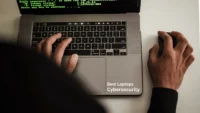False Flags in Cybersecurity: Deception, Attribution, and Real-World Examples
Published: 22 Jun 2025
In the intricate world of cybersecurity, where attribution is often murky and digital fingerprints can be forged, false flag operations represent one of the most deceptive and dangerous tactics used by threat actors.

These operations are designed to mislead investigators, shift blame, and manipulate geopolitical narratives.
This article explores what false flags are, how they work, and provides real-world examples that illustrate their complexity and impact.
What Is a False Flag in Cybersecurity?
A false flag in cybersecurity refers to a deliberate attempt by an attacker to disguise their identity by making it appear as though another individual, group, or nation-state is responsible for the attack. The term originates from naval warfare, where ships would fly enemy flags to deceive opponents before launching an attack.
In the digital realm, this deception can involve:
- Mimicking the Tactics, Techniques, and Procedures (TTPs) of known threat groups.
- Embedding misleading Indicators of Compromise (IOCs) such as IP addresses or language artifacts.
- Reusing or modifying malware associated with other actors.
- Launching attacks from compromised infrastructure in foreign countries.
Why Are False Flags Used?
False flag operations serve multiple strategic purposes:
- Obfuscation: Hide the true identity of the attacker.
- Misdirection: Lead defenders down the wrong investigative path.
- Geopolitical manipulation: Frame another nation or group to provoke conflict or diplomatic fallout.
- Testing attribution capabilities: Gauge how well defenders can detect and attribute attacks.
Real-World Examples of False Flags in Cybersecurity
1. Olympic Destroyer (2018 Winter Olympics)
What happened: During the opening ceremony of the 2018 Winter Olympics in Pyeongchang, South Korea, a cyberattack disrupted Wi-Fi, ticketing systems, and broadcasting services.
False flag elements:
- Malware contained code snippets and IOCs linked to multiple APT groups, including Lazarus Group (North Korea) and Fancy Bear (Russia).
- Language artifacts in the code were deliberately inconsistent.
- Analysts initially suspected North Korea, but deeper forensic analysis pointed to Russian actors attempting to frame others.
2. Sony Pictures Hack (2014)
What happened: The group “Guardians of Peace” leaked confidential data from Sony Pictures and demanded the cancellation of The Interview, a film satirizing North Korea’s leader.
False flag elements:
- Malware included Russian-language artifacts.
- The attack infrastructure was hosted outside North Korea.
- The attackers posed as hacktivists, masking potential state sponsorship.
Attribution: The U.S. government ultimately blamed North Korea, but some experts speculated that the evidence may have been manipulated to mislead investigators.
3. Cyber Caliphate and TV5Monde Attack (2015)
What happened: French TV network TV5Monde was taken offline by a group claiming to be affiliated with ISIS.
False flag elements:
- The attackers used the Arabic language and ISIS-style propaganda.
- Forensic analysis revealed links to Russian APT28 (Fancy Bear).
- The infrastructure and malware used were consistent with Russian cyber operations.
Conclusion: The attack was likely a Russian false flag operation designed to test Western attribution capabilities and sow confusion.
4. Guccifer 2.0 and the DNC Hack (2016)
What happened: The Democratic National Committee (DNC) was hacked, and emails were leaked during the U.S. presidential election. A persona named “Guccifer 2.0” claimed responsibility.
False flag elements:
- Guccifer 2.0 claimed to be a lone Romanian hacker but had poor Romanian language skills.
- Metadata in leaked documents contained Russian language settings.
- IP addresses and tools used were linked to Russian military intelligence (GRU).
Attribution: U.S. intelligence agencies concluded that the GRU was behind the attack, using Guccifer 2.0 as a false flag to deflect blame.
How to Detect a False Flag Operation
Detecting false flags is notoriously difficult, but cybersecurity professionals rely on:
- Behavioral analysis: Comparing attack patterns with known threat actor profiles.
- Cross-referencing threat intelligence: Using multiple sources to validate attribution.
- Forensic scrutiny: Examining code, metadata, and infrastructure for inconsistencies.
- Geopolitical context: Assessing whether the attack aligns with the suspected actor’s motives.
Implications of False Flags
False flag operations can have serious consequences:
- Diplomatic fallout: Misattribution can escalate international tensions.
- Resource misallocation: Security teams may chase the wrong threat.
- Erosion of trust: Undermines confidence in threat intelligence and attribution.
Conclusion
False flags in cybersecurity are not just technical tricks; they are strategic tools of deception that blur the lines between truth and fiction. As attackers become more sophisticated, defenders must sharpen their analytical skills, deepen their threat intelligence capabilities, and remain skeptical of surface-level evidence. In a world where digital smoke and mirrors are the norm, clarity comes only through rigorous investigation and collaboration.

- Be Respectful
- Stay Relevant
- Stay Positive
- True Feedback
- Encourage Discussion
- Avoid Spamming
- No Fake News
- Don't Copy-Paste
- No Personal Attacks

- Be Respectful
- Stay Relevant
- Stay Positive
- True Feedback
- Encourage Discussion
- Avoid Spamming
- No Fake News
- Don't Copy-Paste
- No Personal Attacks





